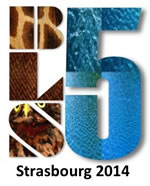|
|
|
Workshops > WS1Body temperature measurement in free ranging animals
McCafferty Dominic 1, Nord Andreas 2, Gallon Susan 1
1: Institute of Biodiversity, Animal Health and Comparative Medicine, University of Glasgow, United Kingdom (Dominic.McCafferty@glasgow.ac.uk, susan.gallon@gmail.com) 2: Department of Biology, Section for Evolutionary Biology, Lund University, Sweden (andreas.nord@biol.lu.se)
Body temperature is widely used in ecological, veterinary and biomedical research. Methods to measure body temperature range from solid sensors, implanted or ingested devices to non-contact IR thermometry and thermal imaging. Increasingly researchers are seeking methods that can be used to non-invasively record and understand body temperature variation from different anatomical regions over relatively long periods of time. This creates high demand for rapid development of novel sensing techniques. Accordingly, the aim of this workshop is to share knowledge across different disciplines in laboratory and field settings to identify how different methods sample spatial and temporal variation in body temperature. Importantly this workshop will look to identify requirements for new instruments and software for the analysis of large datasets. It is anticipated that this workshop will attract researchers working on a wide range of species, including humans, as well as manufacturers of sensor and imaging systems.
09:00 - 09:20 Introduction.
09:20 - 09:40 Intra-abdominally radio telemetric devices and temperature data-loggers, mostly in birds, but also brown bears. Esa Hohtola (Department of Biology, University of Oulu, Finland). 09:40 - 10:00 Biotelemetric capsules and thermal imaging - practicability, significance and limits of two different methods for body temperature measurements in elephants. Nicole Weissenböck (Dept. of Integrative Biology & Evolution, Research Institute of Wildlife Ecology, University of Veterinary Medicine, Vienna, Austria). 10:00 - 10:20 Surface temperature as a proxy for internal temperature through neck collars in mouse lemurs. Pauline Vuarin & Pierre-Yves Henry (CNRS/Muséum National d'Histoire Naturelle, France). 10:20 - 10:40 Comparing subcutaneous to surface temperature in the chicken, with implanted dataloggers and thermal images. Katherine Herborn (Institute of Biodiversity, Animal Health and Comparative Medicine, University of Glasgow, United Kingdom). 10:40 - 11:00 Thermal imaging in wild passerine birds and automatic processing of large data sets from thermal videos. Paul Jerem (Institute of Biodiversity, Animal Health and Comparative Medicine, University of Glasgow, United Kingdom).
11:00 - 11:20 Coffee break and informal discussion.
11:20 - 11:40 Prediction of human core body temperature using non-invasive measurement methods. Simon Annaheim (EMPA, Swiss Federal Laboratories for Materials Science and Technology, Switzerland). 11:40 - 12:00 Long term body temperature measurement in wild tuna, using body temperature as proxy for physiological parameters and lab/field differences in application. Adrian Gleiss (Stanford University, USA). 12:00 - 12:20 Temperature measurements in free-diving pinnipeds and penguins. Paul Ponganis (Scripps Institution of Oceanography, Univ. California San Diego, USA). 12:20 - 12:40 Practical issues with temperature measurement in wild animals, and the use of temperature sensors to detect particular behaviours. Brian Cresswell (Biotrack, United Kingdom).
12:40 - 13:00 Concluding discussion on sensor design and analytical methods. |


